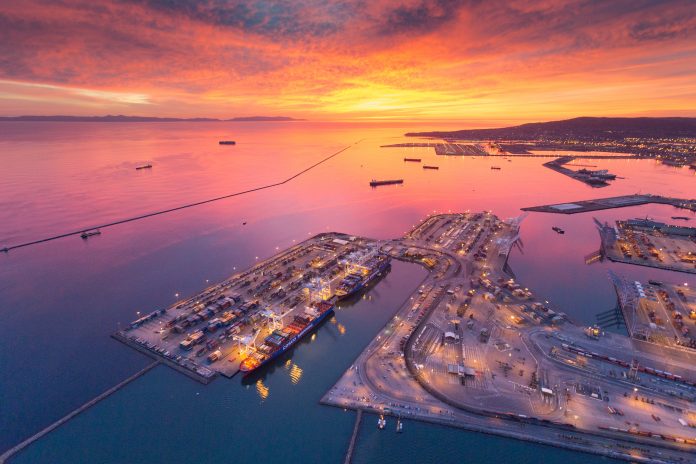Two of the major container ports in California, United States have announced they will receive federal financial support to proceed with environmentally-friendly projects.
The ports of Long Beach and Oakland will be awarded federal grants to make progress with clean-air infrastructure projects.
The Port of Long Beach (POLB) will receive a US$30.1 million grant from the US Department of Transportation to develop the largest fleet of manually operated, zero-emissions cargo handling equipment at a single marine terminal.
Funding for the new clean air project comes from the 2022 Port Infrastructure Development Program, administered by the US Maritime Administration. The project will replace the Long Beach container terminal’s diesel-powered tractors with approximately 60 electric, human-powered tractors.
POLB has set a goal to have all zero-emission cargo handling equipment acquired by 2030 and a fleet of zero-emission cargo trucks by 2035.
Compared to 2005, the Port of Long Beach has reduced emissions of diesel particulate matter by 88%, nitrogen oxides by 49%, and sulfur oxides by 96%.
Since 2021, the port has put in place a number of initiatives to further reduce air pollution and build a technological and operational bridge to a zero-emissions future. Some of these initiatives are the launch of the Clean Truck Fund Rate, the adoption of an updated Green Ship Incentive Program that provides the greatest incentive for Tier III vessels and funding for demonstrations of vessel technologies capable of reducing vessel-related emissions through the Port’s technology development program.
Additionally, the Port of Oakland will receive a US$36.6 million grant from the US Department of Transportation to support the development of green infrastructure for additional cargo capacity and operational efficiencies at its outer harbor. This grant is part of a US$94 million federal investment in California’s ports.
The grant to the port of Oakland is intended to implement projects related to electrification, emission reduction and congestion at the port.
It is expected to enable the port of Oakland to make investments to address short-term supply chain uncertainties, import, export and reefer cargo surges and install green energy infrastructure.
The projects will include new, electrically powered, refrigerated container storage racks and new high mast LED lighting. In addition, there will be densified container storage and staging capability for great efficiency, while the project will also include battery storage and other power substation improvements, as well as electric charging infrastructure for zero emissions vehicles and cargo handling equipment.







